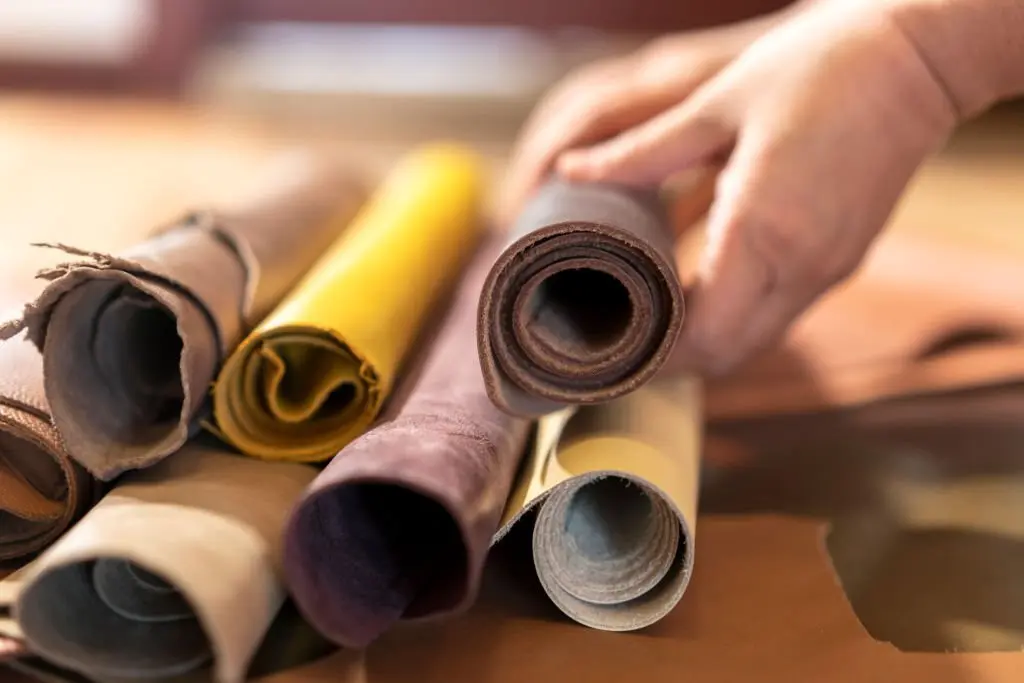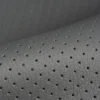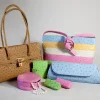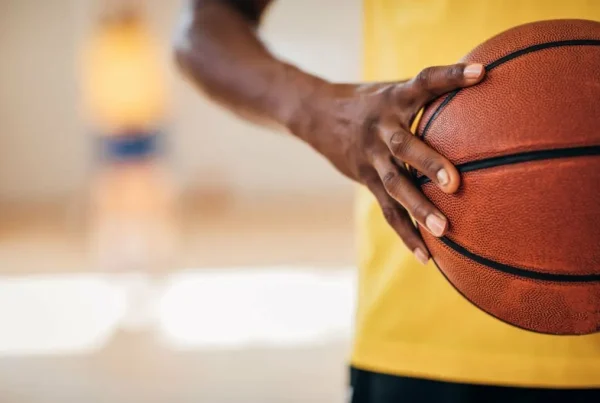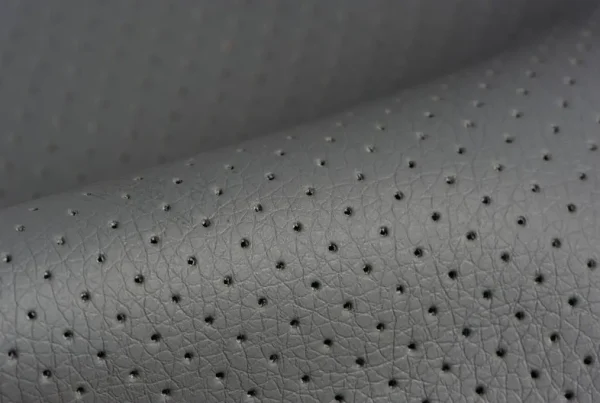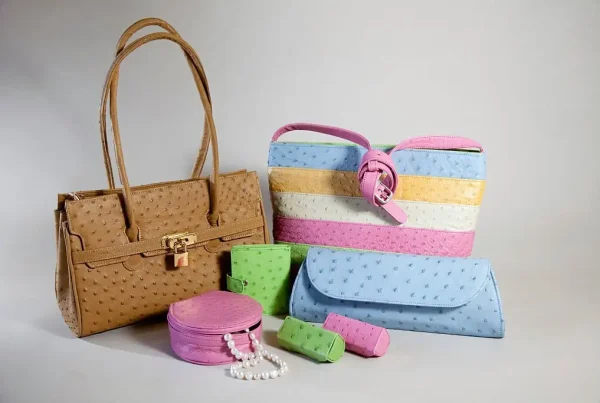Welcome to our comprehensive guide on the diverse world of leather. In this guide, we will explore various types of leather and their significance in different projects. Understanding these options is vital for making informed choices in your leather-related endeavors.
I. Understanding Leather Hides
Let’s begin by demystifying what a leather hide is. Essentially, it serves as the raw material from which all leather products originate. These hides derive from a range of animals, including cattle, pigs, sheep, goats, and even exotic creatures like alligators and snakes.
Within each hide, crucial layers exist that determine the quality of the leather. The outermost layer, known as the grain, possesses a smooth and desirable surface. Just below it lies the grain and corium junction, a transitional zone capable of affecting the leather’s strength and durability. The corium, located beneath the junction, contributes to the leather’s flexibility and toughness. Lastly, the innermost layer comprises the flesh layer, which is generally less desirable for quality leather due to its fibrous nature.
Understanding these layers proves essential as they hold the key to discerning leather quality. The way artisans treat and process these layers will significantly impact the final product’s look, feel, and performance. Whether you’re crafting leather goods or in search of the perfect material for your project, this knowledge will guide you toward making well-informed choices.
As we progress, we will explore various leather grades, delve into different leather types, and examine various leather finishes, all while equipping you with the insights necessary to navigate the world of leather crafting and selection effectively.
II. Types of Leather Grades and Leather Qualities
Now that we’ve explored the basics of leather hides, it’s time to dive into the fascinating world of leather grades and leather qualities. Understanding these distinctions is crucial when seeking the perfect leather for your projects.
Leather is commonly graded based on a variety of factors. These can include the animal’s breed, the climate it lived in, and the methods used during processing. All these elements contribute to the final quality of the leather.
Let’s explore some of the most common leather grades and leather grain types:

Full Grain Leather:
This is the top-tier, creme de la creme of leather. It retains the natural grain and imperfections of the hide, showcasing the true character of the material. Full grain leather is renowned for its durability and unique aesthetic.
Top Grain Leather:
Slightly lower on the quality scale, top grain leather is still exceptional. It’s been sanded or buffed to remove imperfections, resulting in a smoother appearance. While it may lack the character of full grain, it’s more affordable and retains decent quality.
Genuine Leather:
Despite the name, genuine leather is not the highest quality. It’s made from the layers beneath the top grain and is often used for more affordable leather products. While it may lack the premium feel of full or top grain leather, it’s a practical choice for certain applications.
Split Grain Leather:
This type comes from the corium layer and is generally thinner and less durable than full or top grain leather. It’s often used in applications where thickness is not a primary concern.
Bonded Leather:
Bonded leather is a blend of leather scraps and other materials. While it can be cost-effective, it doesn’t possess the longevity or quality of other leather type.
When assessing leather quality, remember that it’s not solely about the grade. Factors like the animal’s breed and the climate it lived in also play a significant role. For example, leather from animals in harsh climates may be tougher and more resilient.
IV. Types of Leather Cuts
Leather comes in various cuts, each with its unique characteristics. Understanding these cuts is essential for tailoring your choice to your specific project needs.
Here are some common leather cuts:
Whole Leather Cut:
This cut includes the entire hide and is often used for large projects requiring a continuous piece of leather.
Side Leather Cut:
A side leather cut is a half hide and is commonly used for smaller leather goods like wallets and belts.
Shoulder Leather Cut:
This cut comes from the upper part of the hide and is known for its durability, making it suitable for straps and belts.
Bend Leather Cut:
Bend leather is flexible and often used for projects where suppleness is essential, like garments.
Butt Leather Cut:
This cut comes from the hindquarters of the animal and is prized for its thickness and strength, making it ideal for heavy-duty applications.
The choice of cut can significantly impact the outcome of your project. Consider the characteristics you need—whether it’s flexibility, thickness, or durability—when selecting the right cut for your leatherworking venture.

V. Types of Leather from Different Animal Hides
Now, let’s embark on a journey through the world of leather by exploring the various types of leathers derived from different animal hides. Each type possesses unique characteristics and qualities that make them suitable for specific applications.
Cattle Leather:
Cattle are a primary source of leather, providing hides from bulls, steers, cows, heifers, dairy cows, and even calves. This leather is known for its durability and versatility. It’s commonly used in crafting everything from rugged work boots to elegant leather jackets. Cattle leather is typically obtained from adult cows, including bulls, steers, cows, and heifers. Whereas, Calfskin leather is obtained from young calves, typically less than six months old.
Pig Leather:
Pigskin leather is highly pliable and has a smooth surface. It’s often used in making gloves, wallets, and clothing due to its soft texture.
Sheep Leather:
Sheepskin leather is prized for its softness and lightweight feel. It’s commonly used in making comfortable leather shoes, gloves, and fine garments.
Goat Leather:
Goat leather is known for its suppleness and strength. It’s often used for gloves, bags, and jackets, thanks to its ability to withstand wear and tear.
Horse Leather:
Leather from horses is less common but valued for its strength and durability. It’s used in making high-quality saddles and equestrian gear.
Each type of animal hide yields leather with distinct characteristics, making it essential to choose the right one for your project.
VI. Exotic Animal Leathers
For those seeking an even more unique and rare touch, consider exploring exotic animal leathers. These luxurious materials offer something truly extraordinary:
Alligator Leather:
Alligator leather boasts a distinctive texture with raised scales. It’s highly sought after for high-end accessories like handbags and belts.
Snake Leather:
Snake leather is known for its sleek appearance and distinctive patterns. It’s often used to create eye-catching fashion items.
Ostrich Leather:
Ostrich leather is prized for its distinctive quill patterns and softness. It’s used in crafting luxury items like wallets, boots, and briefcases.
Crocodile Leather:
Crocodile leather, like alligator leather, features scales and is esteemed for its exotic appeal. It’s commonly used for upscale accessories and footwear.
Lizard Leather:
Lizard leather has a unique, bumpy texture and is utilized in crafting stylish belts and wallets.
Exotic animal leathers offer not only a touch of exclusivity but also exceptional quality and durability. However, it’s crucial to ensure that they are sourced ethically and comply with conservation regulations. These exquisite leathers can elevate your fashion and accessory choices to a whole new level.
VII. Types of Leather Finishes – Finished Leathers
Now, let’s delve into the world of leather finishes, where the artistry and craftsmanship truly shine. Leather can undergo various finishing methods, each imparting unique visual and functional characteristics. Understanding these type of leather finishes is crucial when selecting the perfect leather for your project. Here’s a glimpse into the diverse array of finishes:

Aniline Finish:
Aniline leather is prized for its natural and unadulterated appearance. It maintains the genuine texture of the hide, resulting in a luxuriously soft and supple feel. One of its distinguishing features is its transparency, which allows the grain and imperfections of the leather to shine through. Aniline leather is often chosen for high-end furniture and upscale fashion items where a genuine and untouched look is desired.
Semi-Aniline Finish:
Semi-aniline leather combines the softness of aniline leather with a subtle protective coating. This finish strikes a balance between preserving the leather’s natural look and enhancing its durability. While it retains the inherent texture and character of the hide, the protective layer provides some resistance to wear and stains. Why Semi-aniline leather is a practical choice for those who want the best of both worlds—a genuine appearance with added longevity.
Antique Grain Finish:
Antique grain leather is specially treated to achieve a weathered and vintage appearance. This finish adds character and charm to leather goods, creating a sense of nostalgia. The deliberate aging process brings out unique patterns and shades, making each piece one-of-a-kind. Antique grain leather is often used in crafting rustic and retro-style accessories and furniture.
Bicast Finish:
Bicast leather undergoes a transformation with the application of a polyurethane layer. This coating gives the leather a glossy and sleek surface, creating a polished and modern appearance. Bicast leather is a popular choice for furniture upholstery due to its lustrous finish and ease of maintenance. Its stylish and contemporary look complements modern interior design.
Nubuck Finish:
Nubuck leather is created by sanding the outer surface of the leather, resulting in a velvety and suede-like texture. While it maintains the leather’s inherent strength, it offers a unique tactile experience. Nubuck leather is frequently chosen for luxury footwear, providing a balance between sophistication and comfort. Its fine texture adds a touch of elegance to shoes and accessories.
Embossed Finish:
Leather can be embossed with various patterns and designs, adding decorative elements to its surface. This finishing technique allows for creative customization and personalization of leather goods. From intricate floral patterns to geometric shapes, embossed leather adds flair and uniqueness to bags, wallets, belts, and other accessories.
Patent Leather Finish:
Patent leather is characterized by its glossy and reflective surface, achieved through the application of a plastic or lacquer coating. This finish exudes a formal and polished appearance, making it a favorite for formal shoes and accessories. Patent leather’s shine and luster add a touch of sophistication to evening wear and special occasions.
Printed Leather Finish:
Printed leather features decorative patterns or designs that are applied through printing techniques. This finish offers a wide range of creative possibilities, allowing for intricate and eye-catching designs on leather goods. Printed leather adds a distinctive flair to bags, wallets, clothing, and fashion accessories.
Suede Finish:
Suede leather is known for its soft and fuzzy texture, created by buffing the inner surface of the leather. This finish provides a casual and relaxed appearance, making it popular for casual footwear, jackets, and accessories. Suede’s tactile appeal and comfort make it a go-to choice for everyday fashion.
Washable Leather Finish:
Washable leather finish is designed for practicality, allowing for easy cleaning and maintenance. It’s a highly functional choice for everyday use, as it resists stains and is simple to care for. This finish ensures that your leather items remain looking fresh and pristine even with regular wear.
Each leather finish serves a distinct purpose and caters to various tastes and needs, adding versatility to the world of leather crafting and fashion. Whether you’re drawn to the raw beauty of aniline or the sleek elegance of patent leather, there’s a finish that suits your preferences.
Distressed Leather Finish:
Distressed leather is a unique finish that undergoes an intentional aging process, resulting in a distinctive, weathered appearance. This finish is favored for creating a vintage look, making it an excellent choice for rustic leather goods. The distressing process involves techniques like scuffing, staining, and fading, enhancing the leather’s character. Whether you’re crafting a vintage-style jacket or rustic leather furniture, distressed leather adds a touch of history and nostalgia to your creations. Learn more about the charm of aged leather.
Pigmented Leather Finish:
Pigmented leather stands out for its durability and uniform color. Unlike other finishes, pigmented leather features a protective coating that shields it from wear and tear, making it an ideal choice for applications requiring longevity. Its versatility allows for various applications, from furniture upholstery to automotive interiors. If you prioritize easy maintenance and consistent color in your leather products, pigmented leather is an excellent option to explore.
VIII. Alternative Leather Types
In our exploration of the diverse world of leather, it’s essential to touch upon alternative options that cater to different preferences and ethical considerations.
Faux Leather:
Faux leather, also known as synthetic leather or leatherette, is a popular alternative to traditional animal-based leather. It’s made from various synthetic materials such as polyurethane (PU) or polyvinyl chloride (PVC). Faux leather mimics the look and feel of real leather, offering a cruelty-free and more affordable option. It’s widely used in clothing, accessories, and upholstery, providing a versatile choice for those who seek animal-friendly alternatives.
Vegan Leather:
Vegan leather is another ethical alternative to animal leather. Unlike faux leather, which may use plastics, vegan leather is often produced from sustainable and eco-friendly materials. It’s a preferred choice for individuals who want to minimize their environmental impact while enjoying the look and feel of leather. Vegan leather comes in various forms, including plant-based options like mushroom leather or Piñatex, which is made from pineapple fibers.
Protein Leather:
Protein leather is an emerging innovation in the world of sustainable materials. It’s created using proteins derived from natural sources such as mushrooms, mycelium, or agricultural waste. This eco-friendly approach aims to replicate the properties of traditional leather without the need for animal hides. Protein leather offers a sustainable and cruelty-free option for those who value ethical and environmentally conscious choices.
Latigo Leather:
Latigo leather is a type of cowhide leather which is famous for its durability and resistance to stretching. People often use latigo leather for saddles, belts, and straps due to its strength. Latigo leather undergoes a special tanning process, making it less susceptible to water damage and wear. Its rich color and firm texture make it a popular choice for rugged outdoor gear.
Saffiano Leather:
Luxury brand Prada initially developed Saffiano leather, a textured leather known for its distinctive crosshatch pattern, and many high-end fashion houses now use it. Saffiano leather is highly resistant to stains, scratches, and water, making it a practical and stylish choice for accessories like wallets, handbags, and phone cases.
Microfiber Leather:
Microfiber leather is a synthetic alternative to traditional leather, known for its sustainability and versatility. Made from finely woven microfibers, this material mimics the look and feel of genuine leather. It’s an eco-friendly choice, making it perfect for those seeking sustainable leather alternatives.
IX. Conclusion
In this comprehensive guide, we’ve taken a journey through the diverse realm of leather. We’ve explored the types of leather, their grades, cuts, and finishes, all while highlighting the uniqueness of each. As you embark on your leather projects, keep in mind the importance of choosing the right type of leather that suits your needs.
Leather isn’t merely a material; it invites creativity, symbolizes quality, and showcases craftsmanship. Whether you’re crafting leather goods, selecting the perfect jacket, or adding a touch of luxury to your accessories, the knowledge you’ve gained here will steer you toward the ideal choice.
So, embrace the world of leather pieces, appreciate its variety, and make your next leather endeavor an unforgettable one. Happy crafting, and may your leather creations stand the test of time in both style and substance.
